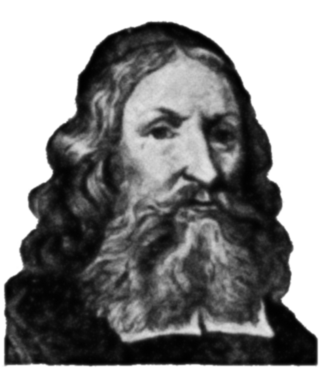Related Research Articles

The Church of Sweden is an Evangelical Lutheran national church in Sweden. A former state church, headquartered in Uppsala, with around 5.6 million members at year end 2021, it is the largest Christian denomination in Sweden, the largest Lutheran denomination in Europe and the third-largest in the world, after the Ethiopian Evangelical Church Mekane Yesus and the Evangelical Lutheran Church in Tanzania.

Laurentius PetriNericius was a Swedish clergyman and the first Evangelical Lutheran Archbishop of Sweden. He and his brother Olaus Petri are, together with the King Gustav Vasa, regarded as the main Lutheran reformers of Sweden. They are commemorated by the Evangelical Lutheran Church in America on 19 April.

Olof Persson, sometimes Petersson, better known under the Latin form of his name, Olaus Petri, was a clergyman, writer, judge, and major contributor to the Protestant Reformation in Sweden. His brother, Laurentius Petri, became the first Evangelical Lutheran Archbishop of Sweden.

Uppsala Cathedral is a cathedral located between the University Hall of Uppsala University and the Fyris river in the centre of Uppsala, Sweden. A church of the Church of Sweden, the national church, in the Lutheran tradition, Uppsala Cathedral is the seat of the Archbishop of Uppsala, the primate of Sweden. It is also the burial site of King Eric IX, who became the patron saint of the nation, and it was the traditional location for the coronation of new Kings of Sweden.

The Archbishop of Uppsala has been the primate of Sweden in an unbroken succession since 1164, first during the Catholic era, and from the 1530s and onward under the Lutheran church.

Johannes Magnus was the last functioning Catholic Archbishop in Sweden, and also a theologian, genealogist, and historian.
Olaus Laurentii was a Swedish ecclesiastic and archbishop of Uppsala.
Olof Mårtensson also known in the Latin form Olaus Martini, was Archbishop of Uppsala from 1601 to his death.

Gustav Eriksson Trolle was Archbishop of Uppsala, Sweden, in two sessions, during the turbulent Reformation events.

Samuel Troilius was Archbishop of Uppsala from 1758 to his death.

Olaus (Olov) Svebilius was a Swedish priest and professor. He was Bishop of the Diocese of Linköping and Archbishop of Uppsala. His most notable work was Martin Luthers Lilla katekes med Katekesförklaring, a Swedish language translation and explanation of Luther's Small Catechism.
Andreas Laurentii Björnram, also known as Bothniensis, Bureus which he called himself in honor of his mother's family, was Archbishop of Uppsala in the Church of Sweden from 1583 to his death. He was born in 1520, being the last Archbishop of Uppsala to have been born before King Gustav Vasa decreed Lutheranism to be the official state religion of the Kingdom of Sweden in 1531 during the Lutheran Reformation.

The Diocese of Strängnäs is a part of the Lutheran Church of Sweden and has its seat in Strängnäs Cathedral in Strängnäs, south of Lake Mälaren. The diocese is made up of the two provinces Närke and Södermanland.

Olav Engelbrektsson was the 28th Archbishop of Norway from 1523 to 1537, the Regent of Norway from 1533 to 1537, a member and later president of the Riksråd, and a member of the Norwegian nobility. He was the last Roman Catholic to be the Archbishop of Norway before he fled to exile in 1537.
The Catholic Diocese of Bergen or Diocese of Bjørgvin in Norway existed from the eleventh century to the Protestant Reformation (1537), and included the (modern) counties of Hordaland and Sogn og Fjordane.

Thomas Simonsson was a Swedish theologian and poet who served as the Bishop of the Diocese of Strängnäs 1429 – 1443. He was the author of the poem Engelbrektsvisan (1439) which included the stanzas known as Biskop Thomas Frihetsvisan. The poem is part of a chronicle play about Engelbrekt Engelbrektsson.
The Liturgical Struggle was the name for the period from 1574 until 1593 in Sweden, when there was a struggle about the confession of faith and liturgy of the Church of Sweden, brought about by the attempts of King John III of Sweden to make the Swedish church take a mediating position between Catholicism and Protestantism by holding only certain doctrines and practices which could be established immediately in either the Word of God or patristic writings, similar to what had once been imposed on the Lutheran areas in Germany during the Augsburg Interim. The struggle began in 1574, when the king introduced some new rules in the liturgy which were not in accordance with Lutheran doctrine and practice, followed by his publication of the Liturgia Svecanæ Ecclesiæ catholicæ & orthodoxæ conformia commonly called the "Red Book", which re-introduced a number of Catholic customs. The Liturgical Struggle ended with the Lutheran confession of faith at the Uppsala Synod in 1593.

Samuel Enander, later knows as Samuel Nicolai Gyllenadler, was a Swedish prelate who served as the Bishop of Linköping 1655–1670.
References
- Nordisk familjebok (in Swedish)
